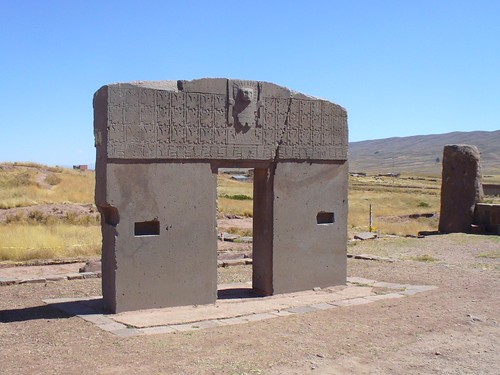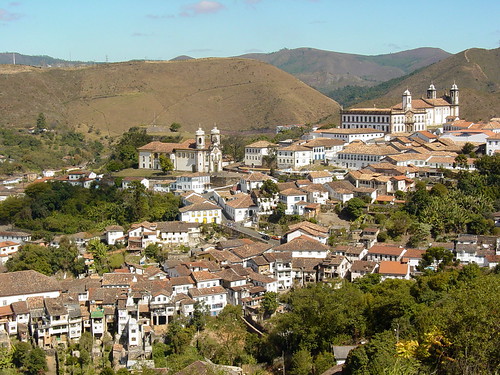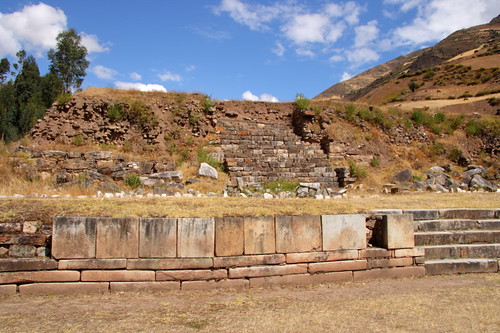Perhaps less known and visited than others, 10 sites, Cultural Heritage Site by Unesco, these places offer us a trip back in time to discover and preserve them.

Fotografía por Cocal
1. Colombia: San Agustin Archaeological Park
Declared a World Heritage Site in 1995, St. Augustine, in the southern department of Huila, about 520 kilometers from Bogota, was inhabited before the Christian era by different cultures, which are only known remains on display today. In the park you can walk paths that retain the typical regional flora and visit the tables, (sectors) where there are sculptures and tombs of the Augustinian culture.
The archaeological park covers an area of 78 hectares, and one of its main attractions is the source of Lavapatas ceremonial, one of the most complex works of art that vanished society. This would be a sacred place, where they perform the healing ritual baths. In an ingenious hydraulic engineering work can be seen figures carved in stone and surrounded by water at different levels. In Neiva, the departmental capital, is flown daily from Bogota. Hence, to reach the park must travel 217 kilometers.
2. Brazil – Ouro Preto and the Estrada Real
It is almost certain that you know Ouro Preto, but did not know: there are recorded historical telenovelas on colonial Brazil. This Baroque citadel was the heart of the gold rush that Brazilians lived in the XVIII century, when nearly 1,500 tons were extracted in a hundred years. That according to modern scholarship, they say that 80% of that amount ended up in Portugal. What remained in Ouro Preto reached to raise an amazing city, full of palaces, churches, mansions and art treasures. While the city is now the most popular scale in the circuit called the Estrada Real, a route that passes through the major milestones of trafficking in gold and diamonds. In Ouro Preto, the ideal path in the square part Tiradentes (surrounded by jewelry) and continues at the Museum of Inconfidencia, which recalls the first attempt independence of Brazil. Then you should visit Our Lady of Pilar for 300 kilos of gold that decorate its interior, in a display which combines baroque, rococo and neoclassical. This is only one of 22 churches in the city. In San Francisco de Asis are treasured works of Antonio Francisco Lisboa, Aleijadinho, the greatest artist of the colonial country. From here you can visit other cities of the Estrada Real. Essential are Congonhas and Diamantina, where he lived most famous slave in Brazil: Xica da Silva. From Belo Horizonte, the capital of Minas Gerais state, nearly 100 miles to Ouro Preto.

Fotografía por Adam Jones, Ph.D.
3. Churches of Chiloé Chile
The churches were born and developed in Chiloe, the archipelago of southern Chile, with an amazing personality. Many were built from the seventeenth century and its architecture mixed with drawings of the Spanish clergy and knowledge of the artisans of the island’s shore, boat builders expert who adapted his techniques to the construction of temples in native woods (coigüe, cypress or mania, highly resistant to rain in the area, which sometimes seem a permanent state.) Still surprised to find these characteristic buildings, erected without nails, where everything is held in the assembly. This style originated Chilota School of Architecture in Wood, and to learn more about it, the Foundation of Friends of the Churches of Chiloé developed the Route of the Churches, a circuit that allows to know and visit several of these temples, including five declared Heritage between 2000 and 2001. The churches of this route are particularly concentrated in the east of the island of Chiloé, and includes the temples of Colo (San Antonio), Tenaún (Nuestra Señora del Patrocinio, San Juan (San Juan Bautista), Dalcahue (Our Lady of Sorrows) and Castro (San Francisco), and other religious buildings and attractions of the island, including areas still preserved the tradition of craftsmen builders. De Santiago is to fly to Puerto Montt and then take a ferry to cross to the island. The route of the Church considers a stretch of 187 kilometers from Ancud, on the northern tip of Isla Grande de Chiloé.
4. Peru – Chavin de Huantar
Between the Cordillera Blanca and the Marañón River canyon expands Conchucos Alley, in the department of Ancash, 462 miles northeast of Lima, in the heart of the Andes. The area is home to dreamy landscapes, towns full of tradition and ideal destinations for adventure sports. On this route is the Monumento Arqueológico Chavín de Huántar, which was a place for ceremonies and rituals of the warrior priests of the Chavin culture, which flourished between the X and fourth centuries BC Its architecture included stone to a seismic technique. Representations stand as monolithic pike (main deity of this culture) and the ball heads or guardians. Starting this year, the circuit will be lit on special occasions like Easter, holidays and long weekends. The site is visited from Tuesday to Sunday from 9 to 17, and it is more advisable to go too Chavin National Museum, which displays original pieces. Chavin is 2.5 hours from Huaraz.

Fotografía por LusoFox
5. Bolivia – Tiwanaku archaeological ruins
The ruins of Tiwanaku belong to an ancient pre-Inca civilization that started between 1500 and 1400 BC, one of the first on the continent. Are 70 miles northwest of La Paz, at 3885 meters above sea level and still reflect the splendor of their culture. Among the highlights of the citadel are the subterranean temple (with walls adorned with 175 head of limestone that show traits of different ethnic groups) and the most famous, the Puerta del Sol Worked in a single block of stone of 10 tons, was part of a building greater than could be at the top of the pyramid of Akapana. The visit may result in the Regional Museum of Tiwanaku, which displays pieces of pottery, stone and metal, or made of bones and human remains. The asphalted road trip lasts more than an hour.
Leave a Reply
You must be logged in to post a comment.
Recent Comments